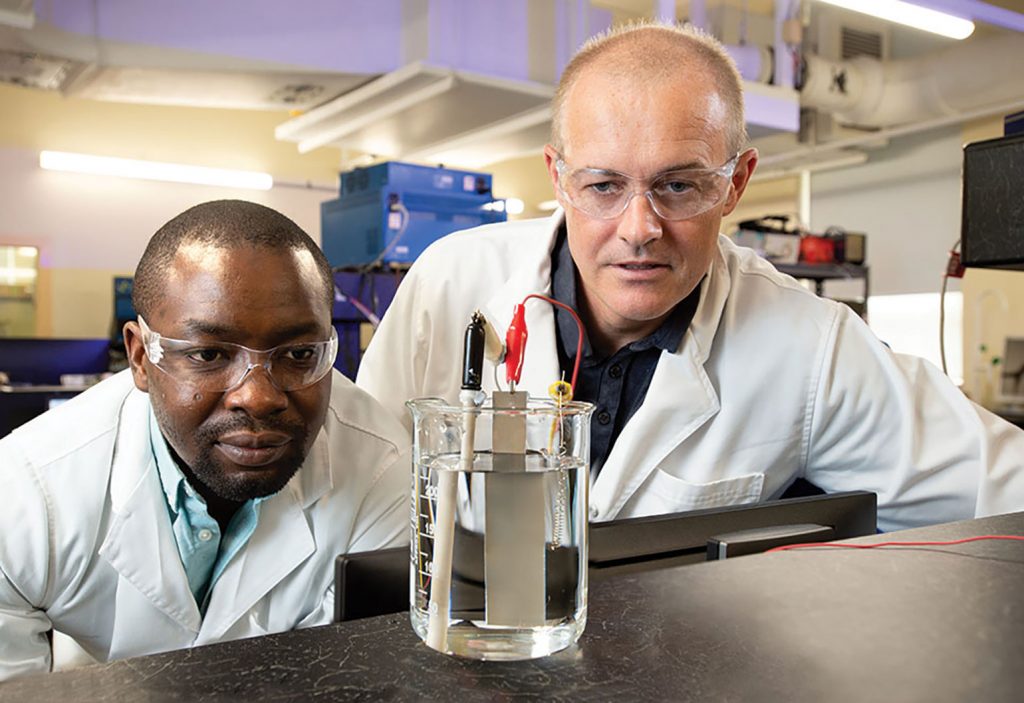A new technique for producing calcium carbonate could help the construction industry cut down on its carbon emissions.
Researchers at the Queensland University of Technology (QUT) have devised an innovative electrochemical process that converts atmospheric carbon dioxide into calcium carbonate, potentially reducing the carbon footprint of the concrete industry.
The technique was developed by PhD student Olawale Oloye and Professor Anthony O’Mullane from the QUT Centre for Clean Energy Technologies and Practices.
“We were doing a lot of research in hydrogen production, using electrochemical approaches,” O’Mullane told create.
“After reading the literature on CO2 conversion into organic products, we were thinking ‘Could we do something similar, but rather than make organic products, could we make inorganic products that we can recover?’”
The new technique involves applying electrolysis to water that has had carbon dioxide dissolved in it and calcium chloride added. This changes the pH level at an electrode in the water, producing very alkaline conditions that help form carbonate ions. These ions react with the calcium chloride to produce calcium carbonate.
The process also produces hydrogen gas, which can be collected and stored as a renewable fuel source.
“We knew that CO2 dissolves in an alkaline environment, so we thought if we could electrochemically make that on demand, we should be able to solubilise CO2,” O’Mullane said.
“We could then precipitate it out as calcium carbonate, but at the same time generate hydrogen, because we’re doing water electrolysis during the process.”
The research drew on existing principles and processes but applied them in a novel way.
“Splitting water to make hydrogen: there’s a lot of work on that,” O’Mullane explained. “CO2 capture using alkaline environments: that’s also known. Combining the two of them together, and then precipitating calcium carbonate: I’m pretty sure nobody has done that before in a single process.”
The cement industry is a major source of global carbon emissions — about five per cent of global anthropogenic carbon dioxide emissions. It produces approximately 900 kg of carbon dioxide for each 1000 kg of concrete it produces.
“We focused a lot on the calcium carbonate because we were thinking if you want to upscale something like this, a good application of calcium carbonate would be the cement industry,” O’Mullane said.
O’Mullane and Oloye are now considering how to scale up the technology, which could help reduce the carbon emissions of the cement industry.
O’Mullane said it is important to factor in the energy used when applying the process to addressing carbon dioxide emissions.
“We’re capturing CO2, which is obviously a good thing, but if you power your system with coal-fired generated electricity, you’re creating CO2 as part of the energy input,” he said.
“If you want something to be carbon neutral or carbon negative, your energy source has to be renewable, otherwise this whole thing doesn’t make sense.”
